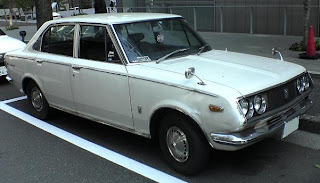
SECOND FASTEST CAR IN WORLD
We received a batch of muscle cars from Carrera to test out. I decided to see how they stack up on plastic and wood tracks, so I enlisted the help of my buddy Reckless Racer to put these cars through their paces. First, we ran them on his 75' Sport track. Later, the cars were raced on a 135' Ogilvie wood track with copper braid. We were interested to see how the cars ran with and without magnatraction.
The fastest on Sport tracke was the Fast and Furious Mustang. This car lapped our Sport test track in 7.35s. This Mustang features a new chassis which is different from the yellow Mustang in this test. It would be a good challenger against a Scalextric Mustang or Camaro. It lapped the Ogilvie wood track in 10.4s, or fourth fastest. The Mustang also features working headlights and taillights. The headlights are of the blueish "xenon" LED variety. There's some spill through the bodywork of this car, but the lights are certainly bright enough to drive the car in the dark with.
The second fastest-car on Sport was this black Dodge Charger with pimpin' spinner wheels. I have to admit that this car kinda grew on me. The red stripe across the rear flank of the car is a nice touch. This Charger lapped the Sport test track in 7.43s and was second-fastest on the Ogilvie at 9.9s. The long wheelbase made for a controllable car on the wood track.
Third fastest on the Sport track was the old-school Dodge Charger street car. I love the look of the wheels on this car as they're not too shiny. The yellow Charger lapped our mag track in 7.63s and was a respectable third on the Ogilvie track, lapping it in 10.0s.
Fourth fastest car on the mag track was the Plymouth Superbird, lapping it at 7.65 seconds. On the Ogilvie, this car was slowest with a lap time of 10.5 s. The top-heavy nature of the Carrera muscle cars made them difficult to push too hard in the curves. The rear wing is easily detachable on this model so it's not likely to get damaged if the car is raced.
Fifth fastest on the Sport track, but quickest around the Ogilvie was this Shelby Mustang. It lapped the mag track in 7.82s, almost half a second slower than the Fast and Furious Mustang. On the wood track it was half a second clear of the field lapping at 9.4s.
Slowest on the Sport, and second slowest on the Ogilvie, the pimpin' Pontiac GTO brought up the rear. The Goat managed 8.08s on the mag track and 10.4s on the wood. The metallic red paint on this car was beautiful and really set off the chrome.All of these cars were very smooth runners right out of the box. They're geared for better braking than previous Carrera muscle car releases, and are certainly stuck down enough for those who like to race magnet cars. The stock motor had enough grunt to really get these cars motoring down the long straights of our test tracks. It was a lot of fun trading paint with Reckless Racer in order to establish our test times. The longer wheelbase cars could be made to step out on the Sport track when pushed hard.If you're more likely to run these cars on a wood track then these are not a bad choice. All of the cars featured a very smooth drivetrain with concentric wheels, and grippy enough stock tires. I'm sure that with a bit of lead placement the tippy nature of these cars can be tamed for non-magnet racers. While the cars are heavy and certainly drive that way, it's what you'd expect from these classic examples of American iron.


 THE SPA CAR
THE SPA CAR



